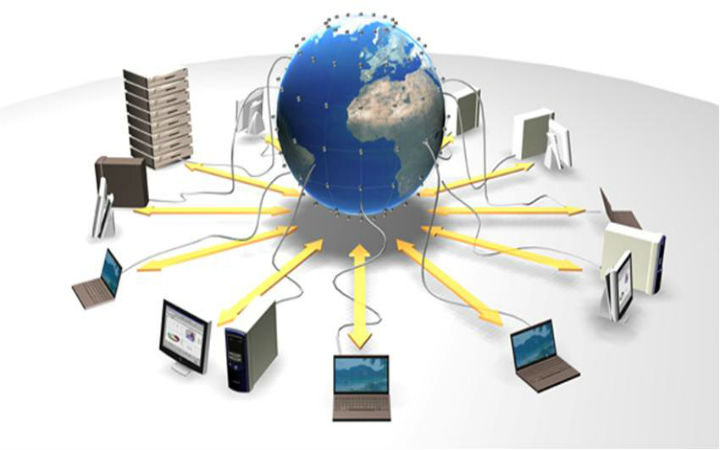Grid Computing Projects for Research Scholars.
What is Grid Computing? Grid computing connects multiple heterogeneous computing resources for single virtual computer uses. Grid computing projects plays an important role for distributed computing research scholar. Grid computing is a distributed architecture, in which unused processing cycle of all computers connected to solve complex issues. It’s a basic of the distributed computing networks. In simple, a collection of similar computers running on the same operates systems to solve big data problems. Characteristics of grid computing are large scale, geographical distribution, resource sharing, consistent access, multiple administrations and pervasive access. Cloud computing concept is extracted from the concept of grid computing. Grid computing Projects PDF.
Classification of Grid Computing Projects.
Network grid: High performance communication service with ignorable fault tolerance is the major goal of network grid. Virtual conference and remote learning which is used for bio medical industry are included in network grid. Eg. World Wide Web.
Data grid: To share data storage capacity we make use of data grid. Each node’s storage capacity can be visualized in data grid. For controlling marine data sets ranging from mega byte to peta byte is used.Applications of data grid are Genomic research and Medical imaging.
Computing grid: Local extension of distrusted computing is the grid which is commonly used CPU resources among several machines is shared in computational grid. Computing grid points specific application which uses multiple CPU capacity.
Methods of Grid Computing Projects.
High throughput computing: Scheduling algorithm uses grid computing application for sorting large number of loosely coupled tasks.
Logistical networking: It is concentrated on storage resource sharing within network. Data transfer and data storage are performed. In high level services logistical network is used.
Collaborative computing: Human to human interaction communication is possible. Virtual shared space for structuring application framework the collaborative computing is used.
On-demand computing: This method supports first priority of short term resources requirement jobs. Globally the resource can be accessed.
Data intensive computing : To maintain geographical distribution of repositories, digital library and distributed database we use data intensive computing methods.
Distributed super computing: We combine multiple high capacity resources from various grid computing environment single system problem cannot be solved.
Security components of Grid Computing Projects
Globes tool kit is used in grid computing for implementing grid security infrastructure. To enhance security mechanism GSI use public key cryptography. Secure communication among element in computational grid is provides in GSI. Decentralized security system for various organizational boundaries is developed.
Functions of Globes Tool Kit (GSI):
- Data replication service(DRS).
- Grid FTP.
- Replica location service(RLS).
- Authentication and authorization.
- Delegation services.
- Reliable file transfer(RTF).
- GSI-open SSH.
- Community authorization service(CAS).
- Data management components.
Topologies of grid Computing Projects
Topology refers to linking various computing system methods. The 3 types of topologies grid computing are
Inter grid: Sharing of resources through internet connection is called inter grid.
Intra grid: Constructing grid computing environment within an organization is called intra grid. Trust based personal contract the connection is established.
Extra grid: Sharing of resources between various organizations is called extra grid topology. Private network connection can be established.
Advantages of Grid computing Projects
- Reliability.
- Security.
- Virtual resources.
- Exploit underutilized resource.
- Resource balancing.
- Parallel CPU capacity.
- Virtual of management organizations.
- Access to additional resources.
Major aim of grid computing projects:
- Load balancing.
- Provide better co-ordination for virtual organization.
- Low down over utilization of resources.
Grid Computing Examples.
- Comparison of resource management between cloud and grid.
- Load balancing.
- Distributed data management.
- Performance evaluation.
- Analyzing data communication reliability.
- Smart grid application.
- Analysis of distributed computing networks.
- Protection of challenges of smart grid infrastructure.
Main challenges of grid computing Projects.
- Trust.
- Communication of grid policies.
- Reliability.
- Robustness.
- Quality of service.
- sharing of applications and data.
- Metadata Policies.
Future of Grid Computing.
Grid computing plays a wide role in science, medical, mathematical, economic forecasting and metro logical applications with huge amount of computational resources. For users a genetic framework is built by grid computing.
Team members helped me to enhance with technical knowledge for my projects. They offered a practical implementation of my projects.
Team members trained students in both theoretical and practical way to implement a project. They provided an excellent assistance to my project.
Team members provide training based on project with associated technology. Projects are implemented by the expertise developers in an effective way.
Implemented my project effectively based on our requirements and they explain every concept clearly.




